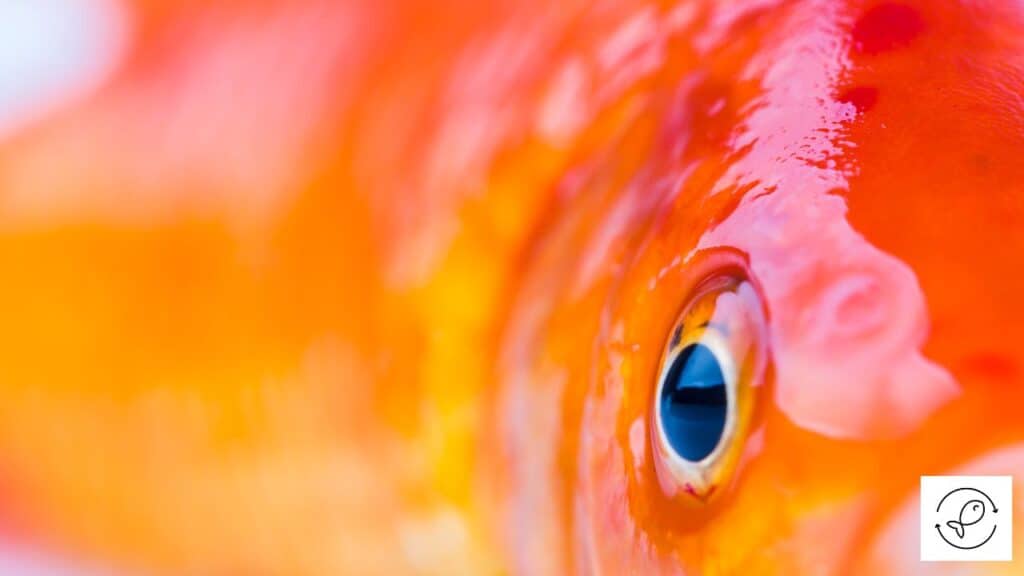Fish Popeye, also known as exophthalmia, is a condition seen in aquarium and pond fish where one or both eyes protrude abnormally. This symptom suggests possible health problems such as bacterial infections, stress, or injury.
It may appear as a cloudy or swollen eye and could point to issues like metabolic disorders or poor water quality.
Diagnosis and treatment require water testing, possibly using antibiotics, and improving the living environment. Immediate and accurate treatment is crucial for the fish’s recovery and to stop the disease from worsening.
Keeping the water conditions ideal and regular checks can help prevent Fish Popeye.
Identifying Popeye Disease
Popeye Disease in fish is recognized by the swelling and protrusion of one or both eyes. This condition occurs due to fluid accumulation behind the eyes.
Other symptoms may include eye cloudiness, signaling a potential infection. The severity of eye protrusion varies.
To diagnose Popeye Disease, you should also evaluate the fish for other signs of illness and check the water quality. Poor water conditions can lead to diseases by weakening the fish’s immune system or allowing pathogens to thrive.
If Popeye Disease is suspected, immediate action is necessary to treat the symptoms and address the root cause. This can stop the disease from progressing and improve the fish’s chances of recovery.
Regular water testing and maintenance can prevent Popeye Disease. Also, maintaining a healthy aquarium environment and quickly responding to health issues reduces the risk of Popeye Disease.
Common Causes Explained
Popeye in fish can be caused by factors such as environmental stress, bacterial infections, and injuries. In aquariums, popeye is often an indication of an issue with the tank conditions.
This condition, known as exophthalmia, occurs when the eye bulges due to an underlying problem. You need to identify the causes of popeye to prevent and treat it.
The main causes of popeye in fish include:
- Physical Trauma: Injuries are the most common cause of popeye. This can happen when fish bump into tank decorations or are involved in fights with other fish, causing swelling behind the eye.
- Poor Water Conditions: Water quality issues, particularly high nitrate levels, can impair kidney and gill functions. To prevent popeye, it is crucial to maintain good water quality through regular changes and monitoring.
- Bacterial Infections: Infections behind the eye can lead to popeye. Fish with weakened immune systems, often due to stress or poor tank conditions, are at a higher risk.
- Anatomical Predisposition: Certain fish breeds, like Fancy Goldfish, are naturally more susceptible to popeye. If only one eye is affected, it may be due to localized trauma or infection.
Treating popeye may involve improving water quality, using Epsom salt baths to alleviate swelling, and administering antibiotics for infections.
Prevention includes keeping the tank environment clean and addressing any health issues promptly.
Effective Treatment Methods
Treating Popeye in fish requires specific strategies, including environmental improvements and medication. Accurate diagnosis is key to selecting an effective treatment.
For bacterial infections, broad-spectrum antibiotics like Baytril or Kanaplex are often used. In serious cases, these antibiotics may be added to the main tank to treat all affected fish. But this must be done cautiously to preserve the aquarium’s ecosystem.
Epsom salt can help reduce swelling and ease pain. It should be used correctly to provide relief while the main treatment works. Monitoring water quality is critical during this time for the fish’s recovery and health.
Preventing future cases involves improving the tank environment by removing hazardous decorations, maintaining clean water, and ensuring a healthy diet to boost the fish’s immune system. Regular observation of the fish is essential to detect any signs of recovery or worsening.
Untreated Popeye can escalate to more serious health problems or be fatal. Prompt and appropriate treatment is essential, tailored to the fish’s specific needs and the outbreak’s context.
Steps for Prevention
To prevent popeye in aquarium fish, follow these steps:
Maintain Good Water Quality
- Test water regularly to keep pH, ammonia, nitrite, and nitrate levels in check.
- Use a good filtration system to keep the water clean.
Monitor Your Fish Daily
- Check your fish every day for any signs of illness, including popeye, to address issues promptly.
Provide a Safe Environment
- Ensure the aquarium has no sharp decorations and is not overcrowded to reduce the risk of injury and stress.
Feed a Nutritious Diet
- Offer a variety of foods suited to the specific needs of your fish to maintain a strong immune system.
These measures are effective in reducing the chances of popeye and maintaining the health of your fish.
Assessing Recovery and Prognosis
To assess the recovery and prognosis of fish with popeye, you need to regularly monitor the condition of the eye. Taking photos or videos can help track progress.
After changes in environment or treatment, watch for signs of improvement. Maintaining high water quality is crucial, as poor conditions can worsen the situation or cause new infections.
Regular water testing and adjustments are necessary to support healing. A diet rich in vitamins can strengthen the fish’s immune system and may accelerate recovery.
Recovery from popeye is achievable with early detection and immediate treatment. The outcome largely depends on the cause and the speed of intervention.
Bacterial infections, when treated early, often result in a positive prognosis. Delayed treatment or severe eye damage can lead to incomplete recovery, with possible ongoing issues or eye loss.
Close monitoring is key to evaluating treatment success and deciding if changes are needed. Optimal care and environment can improve the chances of a good outcome for fish suffering with popeye disease.

